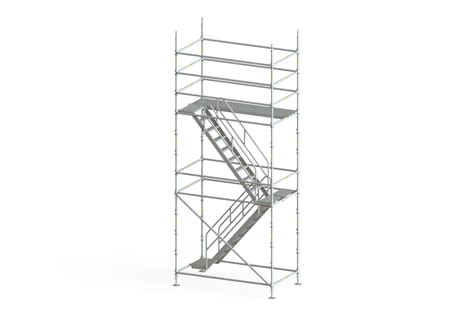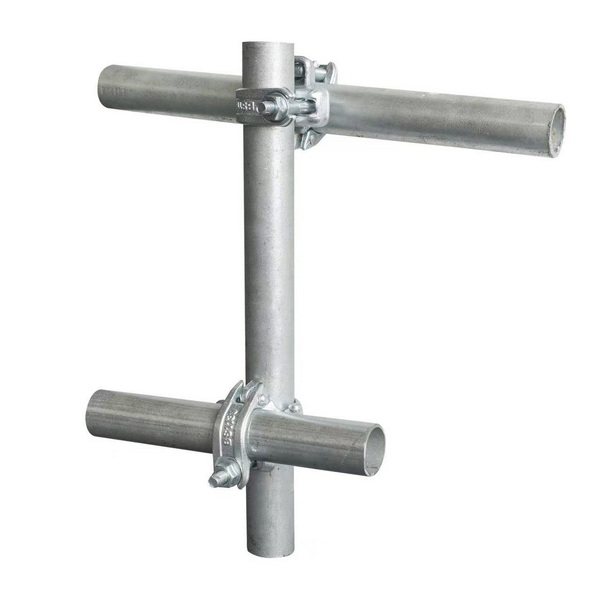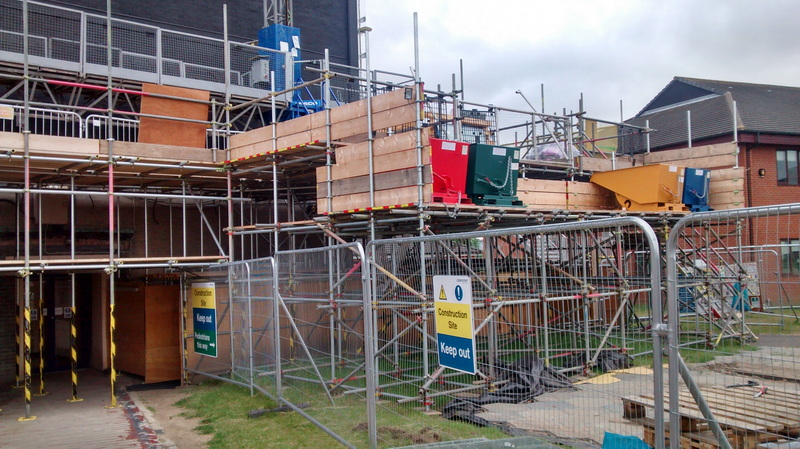Content Menu
● Introduction to Tube and Clamp Scaffolding
● Key Components
● Step-by-Step Instructions for Erecting Tube and Clamp Scaffolding
>> 1. Planning and Preparation
>> 2. Setting Up the Foundation
>> 3. Building Frames and Zones
>> 4. Installing Platforms
>> 5. Adding Bracing
>> 6. Final Inspection
● Safety Considerations
>> Safety Training
>> Regular Inspections
● Best Practices for Tube and Clamp Scaffolding
>> Efficient Erection Techniques
● Advanced Techniques for Complex Projects
>> Curved Scaffolding
>> Advanced Bracing Techniques
● Conclusion
● FAQ
>> 1. What are the basic components of tube and clamp scaffolding?
>> 2. How are clamps tightened in tube and clamp scaffolding?
>> 3. What is the maximum vertical interval for horizontal members in tube and clamp scaffolding?
>> 4. What type of planking should be used for tube and clamp scaffolding platforms?
>> 5. What safety factor should tube and clamp scaffolding be designed to support?
● Citations:
Tube and clamp scaffolding is a versatile and widely used system in construction and maintenance projects. It offers flexibility and can be adapted to various site conditions, making it ideal for both simple and complex scaffolding needs. This article will guide you through the step-by-step process of erecting tube and clamp scaffolding, highlighting key components, safety considerations, and best practices.

Introduction to Tube and Clamp Scaffolding
Tube and clamp scaffolding consists of three basic steel components: base plates, galvanized steel tubing, and clamps. The tubing comes in various lengths, typically from 4 to 16 feet, with twist lock fittings on each end. There are two types of clamps: right angle (rigid) clamps for connecting tubes at right angles and swivel clamps for joining tubes at any angle. Both types of clamps are tightened to 45 foot-pounds using a tube and clamp wrench.
Key Components
- Base Plates: These are essential for distributing the weight of the scaffold evenly on the ground, ensuring stability.
- Galvanized Steel Tubing: Available in different lengths, this tubing forms the framework of the scaffold.
- Right Angle Clamps: Used for connecting tubes at right angles, these clamps provide structural integrity.
- Swivel Clamps: Allow for flexibility in connecting tubes at various angles.
Step-by-Step Instructions for Erecting Tube and Clamp Scaffolding
1. Planning and Preparation
Before starting, it's crucial to plan the scaffold structure accurately. This includes determining the dimensions, layout, and required components such as platforms, cross braces, ladders, and anchor points. Consider the type of work to be performed, the number of workers, and the materials that will be used. Ensure that all necessary permits and approvals are obtained before commencing work.
2. Setting Up the Foundation
Ensure the ground is level and stable. Use mudsills on unstable ground to prevent settling or shifting of the scaffold. Base plates should be securely positioned under each leg of the scaffold to distribute the weight evenly.
3. Building Frames and Zones
Construct each section of the scaffold as individual frames and then connect these frames to form zones. Start from the ground up, ensuring each frame is level and secure before moving to the next. Use right angle clamps for vertical and horizontal connections, and swivel clamps for diagonal bracing.
4. Installing Platforms
Once the frames are built to the desired height, install the platforms. Ensure that platforms are properly secured and meet safety standards. Scaffold-grade planking should be used, and platforms should be wide enough to accommodate workers safely.
5. Adding Bracing
Install diagonal bracing to provide additional stability. For longer scaffolds, repeat bracing every fifth bay. This helps prevent sway and ensures the scaffold remains stable under load.
6. Final Inspection
Conduct a thorough inspection to ensure all components are securely fastened, and the scaffold is level and plumb. Check for any signs of damage or wear on the components.

Safety Considerations
Safety is paramount when erecting scaffolding. Ensure that:
- All personnel involved are trained and qualified.
- The scaffold is designed to support at least four times the maximum intended load.
- Regular inspections are conducted to identify and rectify any hazards.
- Safety nets or guardrails are installed to prevent falls.
- Workers use personal protective equipment (PPE) such as hard hats and harnesses.
Safety Training
Provide comprehensive safety training to all workers involved in scaffolding erection and use. This includes understanding scaffold components, assembly procedures, and safety protocols.
Regular Inspections
Regular inspections are crucial to ensure the scaffold remains safe for use. Inspect for any damage, wear, or loose connections. Make repairs promptly if any issues are identified.
Best Practices for Tube and Clamp Scaffolding
- Customization: Tube and clamp scaffolding can be adapted to fit irregular shapes and obstructions, making it ideal for complex projects.
- Pre-Assembly: Pre-assembling components on the ground can streamline the erection process.
- Regular Maintenance: Regularly inspect and maintain the scaffold to prevent wear and tear.
- Efficient Use of Resources: Plan the scaffold layout to minimize waste and optimize material usage.
Efficient Erection Techniques
To improve efficiency, consider using specialized tools and equipment that can speed up the assembly process. Additionally, ensure that all necessary materials are readily available on site to avoid delays.
Advanced Techniques for Complex Projects
For more complex projects, consider using specialized components such as curved or bent tubing to fit around irregular shapes. Advanced bracing techniques can also be employed to enhance stability in challenging conditions.
Curved Scaffolding
Curved scaffolding is useful for projects that require wrapping around cylindrical structures. This involves using specialized curved tubing and clamps designed for such applications.
Advanced Bracing Techniques
Advanced bracing involves using additional diagonal supports to enhance stability, especially in high-wind conditions or for very tall scaffolds. This can include using guy wires or anchor points to secure the scaffold to nearby structures.
Conclusion
Tube and clamp scaffolding offers a versatile and reliable solution for various construction and maintenance needs. By following the step-by-step instructions outlined in this guide and adhering to safety protocols, you can ensure a safe and efficient scaffolding experience.

FAQ
1. What are the basic components of tube and clamp scaffolding?
Tube and clamp scaffolding consists of three basic components: base plates, galvanized steel tubing, and clamps (right angle and swivel).
2. How are clamps tightened in tube and clamp scaffolding?
Clamps in tube and clamp scaffolding are tightened to 45 foot-pounds using a tube and clamp wrench.
3. What is the maximum vertical interval for horizontal members in tube and clamp scaffolding?
Horizontal members in tube and clamp scaffolding should be erected at vertical intervals of no greater than six and one-half feet.
4. What type of planking should be used for tube and clamp scaffolding platforms?
Only scaffold-grade planking should be used for platforms in tube and clamp scaffolding.
5. What safety factor should tube and clamp scaffolding be designed to support?
Tube and clamp scaffolding must be designed to support at least four times the maximum intended load.
Citations:
[1] https://www.youtube.com/watch?v=ZM6Tlh_NAnQ
[2] https://www.youtube.com/watch?v=iUqDWjr6uok
[3] https://max.book118.com/html/2017/0425/102172593.shtm
[4] https://www.unitedscaffold.ca/scaffold-news/how-to-erect-tube-and-clamp-scaffolding/
[5] https://www.shutterstock.com/video/search/scaffolding-clamp
[6] https://www.bbc.com/learningenglish/chinese/features/q-and-a/ep-200318
[7] https://cdn.dal.ca/content/dam/dalhousie/pdf/dept/facilities/FM%20Safety/fallprotection/Safe%20Job%20Procedure%20for%20Erecting%20Tube%20and%20Clamp%20and%20All%20Around%20Scaffolding%20June%202014.pdf
[8] https://www.istockphoto.com/photos/scaffolding-tube






















